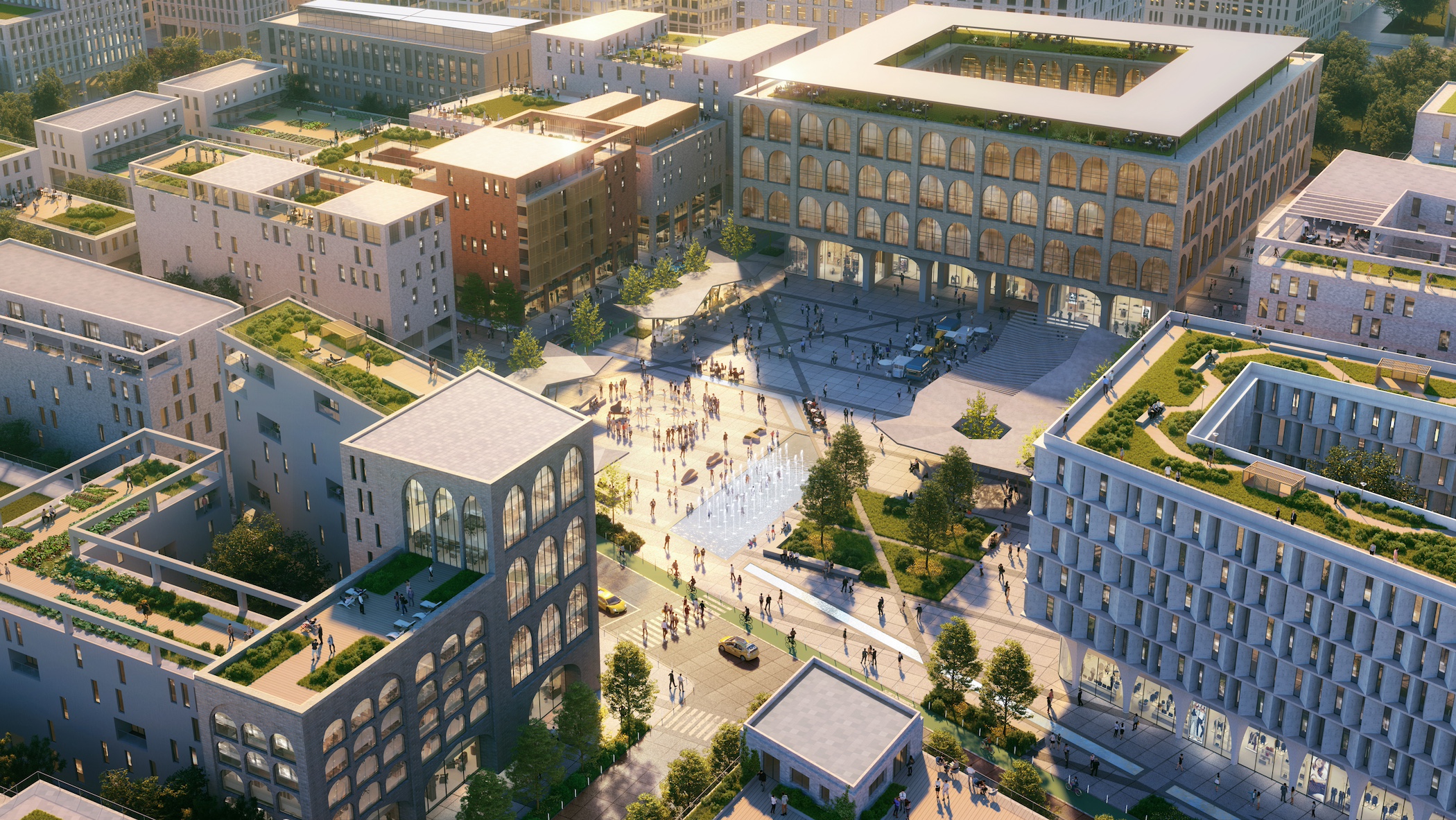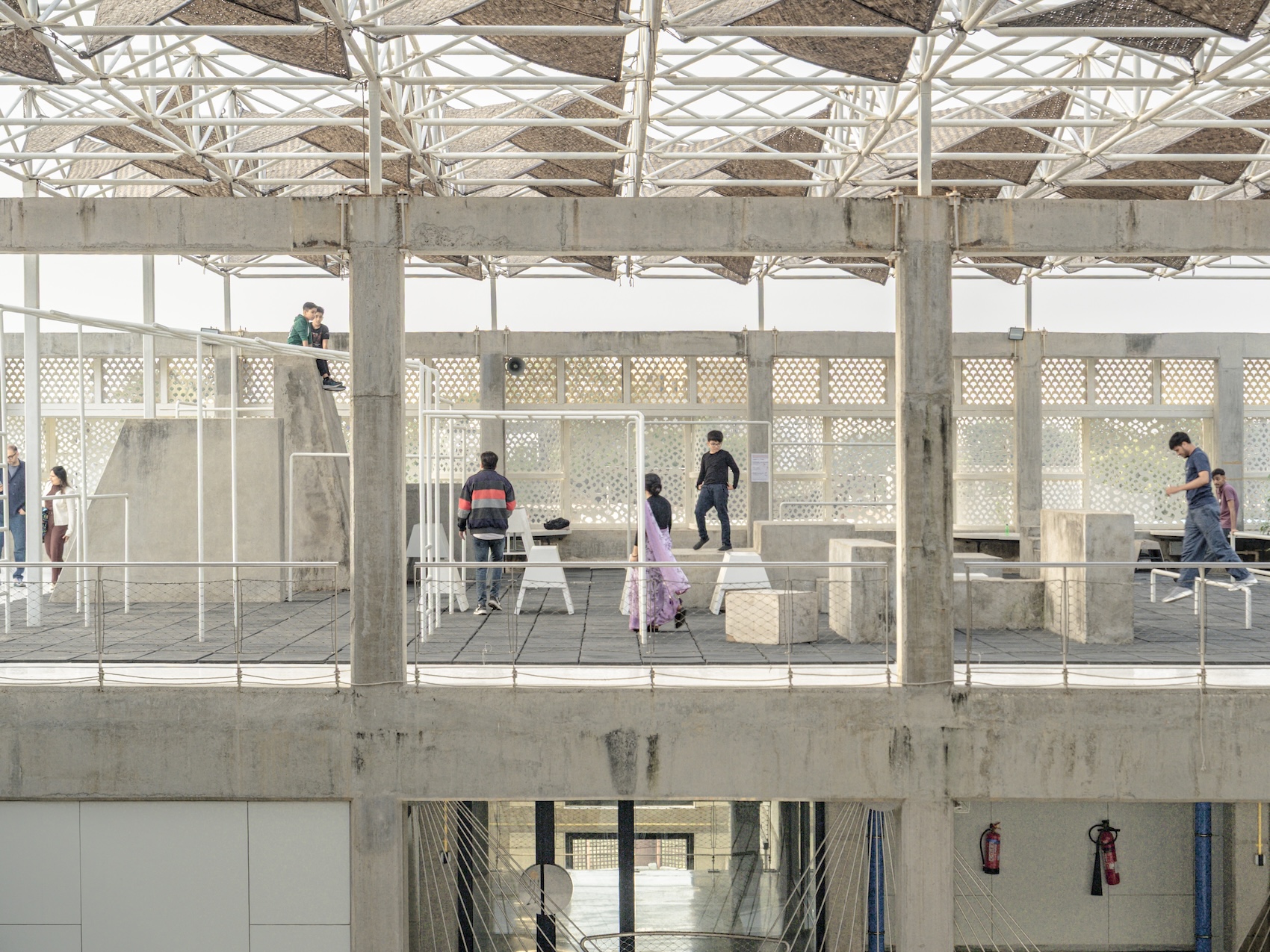AT talks to Hakan Agca, founder and managing director of Cross Works in London, a practice that recently won a competition to design a new city of two million people across 25,000 hectares next to Uzbekistan’s capital, Tashkent.
What’s going on in Tashkent? And why did the government launch a competition calling designs for a new city of two million people across 25,000 hectares next to the city?
As the population of Tashkent – and indeed Uzbekistan – is growing quite rapidly, the government’s objective is to sustainably expand the current city, within a structured and well-planned framework, through the creation of a masterplan. A competition was launched in 2023, with a number of international firms invited to submit their designs within a specific time frame, and Cross Works was awarded the project, following a selection process that involved the government and the President.
Winning a competition of this scale against larger, more established firms is impressive — what do you think set Cross Works apart?
Our masterplan was commended for its use of water through the integration of a widespread canal network, which speaks both to the existing irrigation channels on the site of the new city today, and to the canal network that runs through the existing city of Tashkent. This is a strong characteristic of Tashkent, familiar to those who live there. We were also commended for the generous and carefully distributed and contiguous green spaces, clear and legible urban structure, well defined mix of land uses and typologies, and the rigour with which we considered the phasing strategy of the city. Our careful and detailed calculations of the projected quantum of urban development, green space, and population distribution were also praised during the competition phase, giving the client confidence in our masterplan.
Can you walk us through the master plan for “Yangi Toshkent”? What are the key design principles shaping the city?
As Uzbekistan repositions itself as a global power at the heart of Central Asia, its capital city – Tashkent – the largest city in the wider region, will experience significant growth in coming years. The development site comes with a number of unique natural attributes including the rivers running along either side, archaeological sites which will be protected, and some existing settlements which will be carefully considered for retention and regeneration. The infrastructure will tie into the existing city’s networks, whilst sustainable modes of transport have been proposed with significant emphasis on making the city walkable and cyclable.
The overall city design is focussed on the creation of neighbourhoods, each with a carefully calculated mix of land uses and building typologies, and each with a diverse range of community facilities, commercial space and cultural attractions. The city will naturally have a wide variety of residential typologies, from villas to townhouses to apartment buildings, all catering for the full range of citizens across New Tashkent.
In order to ensure a healthy, happy and sustainable city, the entire development zone is tied together by a continuous thread of green spaces, providing all residents and visitors with access to open space within a five minute walk, of wherever they might be. Whether these open spaces take the form of smaller urban plazas and pocket parks, or the wider green corridors surrounding the proposed canal networks, New Tashkent’s unique characteristic will be its emphasis on bringing urban form and nature together.
How do you balance modern urban expansion with the area’s historical and cultural identity?
Since Uzbekistan gained its independence in 1991, the country takes great pride in – and puts great importance on – its national identity, as you would imagine. We were very open, and indeed curious, to listen and absorb all that the client team had to say around the historical and cultural contexts that we were working within, and our team went to great efforts to carry out in-depth research on the urban and architectural history of Uzbekistan and the wider region.
The fine balance of creating something that resonates and celebrates the country’s traditions and history, whilst also putting forward a modern design aesthetic was a large focus of our work on the architectural guidelines for the city, and certainly the flexibility and adaptability that’s built into our guidelines means that there is plenty of room for the evolution of those ideas in future generations.
The project is designed to be adaptable for centuries — what strategies are in place to allow future architects to evolve the city over time?
The urban and architectural guidelines are codified in a manner that allow for flexibility and adaptability by future architects and designers. Our guidelines provide a framework that is not restrictive or prohibitive, but rather broadly prescriptive. Our intention was to provide a framework for good design, informed by both international standards and the requirements of the Directorate of New Tashkent (our client), while allowing for adaptability and evolution by future generations.
Technologically speaking we also built a ‘Digital Twin’ for the client — an online portal, that houses the masterplan and all of our outputs (including our geo-located masterplan in a GIS environment, our renders, videos, Virtual Reality environments, design guidelines, the wider consultant team’s inputs, and more). This portal provides a centralised location where the masterplan can be updated and tracked by the key stakeholders, and selected information also shared with the wider public.
On that note, your practice is also known for integrating software engineers and computational designers into the architectural process. How has this shaped the Yangi Toshkent project?
The aforementioned Digital Twin for the New Tashkent masterplan is certainly a benchmark for new city design: a centralised location where the masterplan can be updated and tracked by the key stakeholders, and selected information shared with the wider public. Cross Works’ unique synergy of designers and technologists means we can bolster our design work with advanced tech capabilities, such as design optimisation, creation of digital interfaces and the building of bespoke apps and tools that we build in-house that are created for large scale planning projects; all of which we did on the New Tashkent/Yangi Toshkent scheme.
And what role does AI or data-driven urban planning play in your approach?
AI and data are increasingly playing a role in our workflows, from more conventional use-cases like image generation (midjourney, firefly, etc) through to more complex use-cases like machine-learning correlations in our larger urban scale work. Our design and tech teams are constantly innovating in this realm; as such our R&D expenditure is quite large for an SME of our size, but this does lead to increased innovation on every project.
Is Central Asia is emerging as a hotspot for development? What opportunities do you see for architecture and urbanism in the region?
Absolutely. There’s a significant population increase expected in the region, based on demographic models, and a rapid rise in GDP, all of which make it a great place to invest and develop. A new city of 2.5 million people is planned with New Tashkent, so the country is absolutely open to investment from outside its borders. Uzbekistan’s GDP rose significantly from circa 18 billion USD in Q3 of 2017 to circa 60 billion USD in Q3 of 2023 — representing an almost 240 per cent growth over just six years, which the government intends to further accelerate through new policy initiatives intended to drive efficiencies in key industries that will in turn accelerate the rate of urbanisation nationally, alongside its intentions to build new towns and cities.
An increasing drive in service sector industries such as finance, insurance, professional services, technology and more will all be contributing factors to the country’s economic growth, as well as expanding their transport and tourism sectors. All that will bolster growth in Tashkent and across Uzbekistan as a whole, whilst they continue to expand their traditionally strong industries of manufacturing, mining and agriculture.
How has support from the UK’s Department for Business and Trade helped shape your expansion?
The widespread coverage through UK media has been very welcome marketing for Cross Works. The Department for Business and Trade is now making introductions to representatives across the region. Being invited to attend conferences in Central Asia recently, to further publicise our work, has meant we’ve had the opportunity to present to esteemed audiences from Kazakhstan, Uzbekistan and Turkmenistan, and to meet Ambassadors, officials and key stakeholders in those countries, all of which greatly helps with our networking efforts.
What lessons can other UK SMEs learn from your success in international markets?
Providing a unique and distinct offer is key, especially in the field of architecture and urban design. In a saturated market, providing just the same as the incumbents is not enough. Furthermore, finding and nurturing exceptional people in the team who can deliver that offer. Lastly, a willingness to get out there and work on the frontier has also been a key part of our success; working in new and interesting geographies off the beaten path, with new and interesting clients.


















